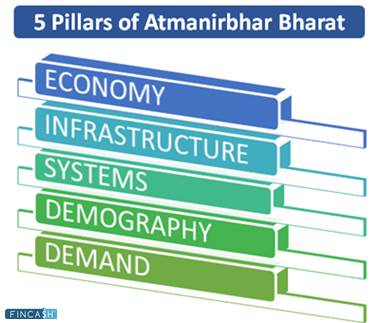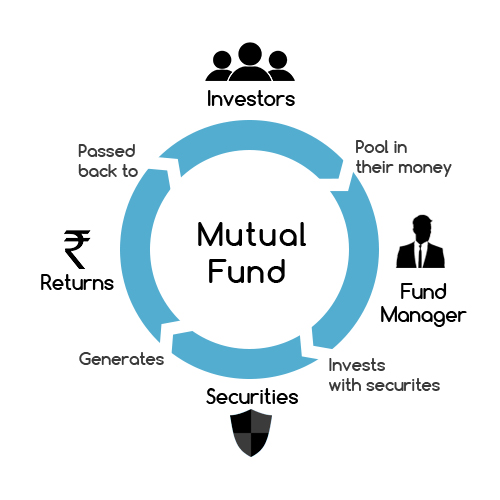
Table of Contents
Self-Help Groups in India
Self-Help Groups (SHGs) are informal groups of individuals with similar socio-economic backgrounds who want to work together to achieve a shared goal of improving their living situations.

A self-help group is a committee of 10 to 25 local women from 18 to 40 years of age. Although these are most common in India, they can also be found in other countries, particularly in South and Southeast Asia.
Examples of SHGs
The Tamil Nadu Corporation for Development of Women Limited (TNCDW) was founded in 1983 in Tamil Nadu with the primary goal of socio-economic development and rural women empowerment. In September 1989, with the help of the international fund for Agricultural Development (IFAD), the Tamil Nadu government pioneered the Self-Help Group idea in the country by organizing SHGs in the Dharmapuri district.
The IFAD initiative's success cleared the door for the "Mahalir Thittam" project, which began in 1997-98 with State Government money and gradually expanded to all 30 districts.
Features of SHGs
To determine whether a group is SHG or not, look for the following characteristics:
- Every group member's slogan should be "saving first, credit afterwards."
- Group registration is not required
- The recommended size for a Self-Help Group is between 10 to 20 people
- In terms of economic status, the Self-Help Group is homogenous
- Groups are non-political, non-profit organizations with a democratic culture
- Each group should consist of only one person from the same family
- The Self-Help Group meets regularly, usually outside of working hours, and full attendance is required for optimal involvement
- A group consisting solely of men or women is to be created
- Every organization provides a forum for its members to share their thoughts and opinions openly
- The groups are transparent and accountable to one another in terms of financial transactions
Talk to our investment specialist
Importance of SHGs
The importance of SHGs is as follows:
- SHGs have given marginalized people an otherwise neglected voice
- They help people earn a living by giving vocational training and delivering equipment and other resources to improve their existing source of Income
- Due to the sheer guaranteed returns, SHGs encourage banks to lend to poor and marginalized people
- It helps to develop Financial Literacy among individuals by delivering knowledge about how to save money
- These groups serve as pressure groups, exerting pressure on the government to take action on key topics
- They contribute to gender equality by empowering women
- Government programmes are implemented and improved with the help of SHGs. Corruption is also reduced with the use of social audits
- Financial Inclusion through SHGs has resulted in better family planning, lower child mortality rates, improved maternal health, and improved ability to combat illnesses through better nutrition, healthcare, and housing
- SHGs aid in the eradication of various societal evils, such as dowry, alcohol addiction, and early marriage, among others
Challenges of SHGs
No doubt, self-help groups have emerged as a blessing for a majority of underprivileged people. However, there are a few challenges faced by this group, such as:
- Only a small percentage of Self-Help Groups are able to progress from microfinance to microbusiness
- SHG members lack the necessary information and direction to pursue viable and successful career opportunities
- There is no security in the SHGs since they rely on the members' mutual trust and confidence. The SHGs' deposits are not protected or secure
- Patriarchal attitudes, archaic thinking and societal duties prevent women from joining SHGs, restricting their economic opportunities
Self-Help Groups Yojana
As a facilitator for SHGs, the government plays a significant role. SHGs are promoted by a number of government initiatives. Here are some of them:
- Self-help Group – Bank Linkage Programme (SHG-BLP)
- Collaboration with National Rural Livelihoods Mission (NRLM)
- Micro-Enterprise Development Programme (MEDPs)
- NABARD Financial Services Ltd. (NABFINS)
- Scheme for promotion of Women SHGs (WSHGs) in backwards & LWE districts of India
- Livelihood and Enterprise Development Programmes (LEDPs)
- Self-help Group – Bank Linkage Programme (SHG-BLP)
- Financing of Joint Liability Groups (JLGs)
- Training of Trainers (TOT) programme
- Women's Self-Help Groups in India
Here are a few women-led self-help groups presently working in India.
Kashika Foods - Kashika is a small step towards empowering rural Indian women towards self-sustenance. It works with rural women near villages who make Indian spices using their traditional knowledge and skills
Mahalaxmi Shg - Mahalaxmi SHG has been producing and selling clothing in the local Market through various exhibits. The members have always been supportive of the community and had the opportunity to do so, even more so last year when the global COVID 19 epidemic struck
List of Self-Help Groups
Below-mentioned is the list of self-help groups:
| Name of SHG | State/Union Territory | Objective |
|---|---|---|
| Amba Foundation | Delhi | Making face masks out of fabric |
| Ambe Mahila Mandal | Gujarat | Sell products like vaseline, spices and so on |
| BHAI BHAUNI | Odisha | Make a place home that is unorganised |
| Chamoli Self-help Group | Uttarakhand | Making prasad using locally grown goods |
The Bottom Line
India is a diverse country with a diverse culture, history, and historical antecedents, among other factors. Dealing with problems on the ground level is quite challenging. The government's ability to deal with socio-economic issues alone is restricted. As a consequence, bringing individuals together who are suffering from similar challenges might be a game-changer for India's Economy. In this scenario, SHGs come into the picture.
All efforts have been made to ensure the information provided here is accurate. However, no guarantees are made regarding correctness of data. Please verify with scheme information document before making any investment.







